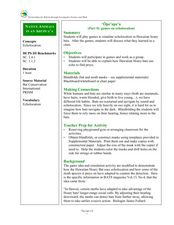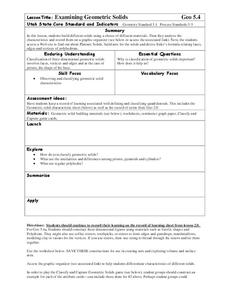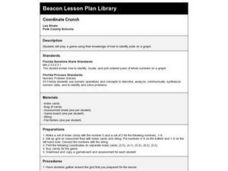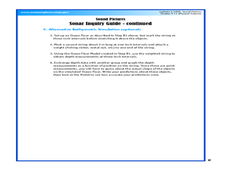Curated OER
Games on Echolocation
Get a little batty with life science! This fun simulation game replicates how bats use echolocation to hunt moths in their native Hawaiian habitat. After creating blind folds and discussing some basic principles of echolocation, students...
Curated OER
Going Fishing
In this addition facts lesson, students recognize the numbers and are able to add simple problems by participating in a fishing game. Students use a fishing pole with a washer on the end to fish for magnetic fish made out of foam....
Curated OER
Archaeology: Digging in the Classroom
Young scholars explore how an archaeologist works and makes discoveries. In this archaeology lesson, students participate in a simulation in which they excavate broken pottery. Young scholars use measurement, geometry, and observation...
Curated OER
Telling Time to 5 Minutes
Students take part in various activities ranging from creating a human clock, to small group problem solving to reinforce the concept of telling time accurately to five minutes on an analog clock.
Curated OER
Examining Geometric Solids
Students explore geometry by completing a math worksheet in class. In this shape identification lesson, students identify the characteristics associated with 15 solid geometric shapes. Students identify patterns between vertices, edges...
Curated OER
An Introduction to Simple Machines
Students investigate simple machines and their uses in everyday life. In this scientific method instructional activity, students examine physical tools such as wedges, screws, and levers using a "how does it work" approach....
Curated OER
Investigation: Peg Race
Learners explore competition by participating in a peg race. In this pattern creation instructional activity, students utilize an egg timer and pegs or colored cubes to create patterns quickly while competing with fellow classmates to...
Curated OER
Coordinate Crunch
Students identify plots on a graph while playing a game on a large coordinate grid and then on smaller grids.
Curated OER
Sound Pictures
High schoolers examine the components of a sonar system. In this physical science lesson students explain how multibeam and sidescan sonar systems are useful to ocean explorers. High schoolers simulate sonar operations in an...
Curated OER
Who Gets Eaten? A Study of Natural Selection
Fourth graders represent a new predator on a population of colored worms. They mathematically determine the effect of the new predator on the survival and reproductive rates of the worms, simulating natural selection at work.









